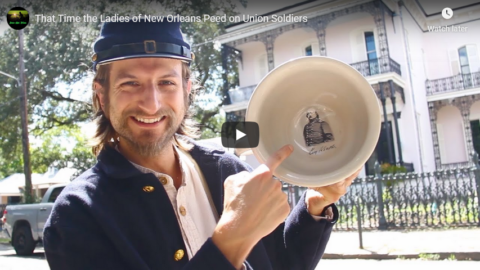Matt Estlea
Published 9 Sep 2020Drawer making, quite possibly one of the most confusing and difficult milestones you’re likely to face as a beginner woodworker. This is a tricky process that requires a lot of planning, visualisation and accuracy. The lapped dovetails at the front will be a feature that makes or breaks your cabinet, and the dovetails at the back will be one of the most complicated joints you will have likely ever cut.
_________________________________________________________________Support what I do by becoming a Patron! This will help fund new tools, equipment and cover my overheads. Meaning I can continue to bring you regular, high quality, free content. Thank you so much for your support! https://www.patreon.com/mattestlea
Don’t want to commit to a monthly direct debit but still want to help out? That’s fine!
You can make a one time donation here: www.mattestlea.com/donate
You can donate us biscuits here: www.mattestlea.com/wishlist
_________________________________________________________________
BUY THE WOODWORKING BIBLE HERE:
www.mattestlea.com/the-woodworkers-manual
_________________________________________________________________SOCIAL MEDIA
Instagram: www.instagram.com/mattestlea
Twitter: www.twitter.com/mattestlea
Patreon: www.patreon.com/mattestlea
Pinterest: www.pinterest.com/mattestlea
LinkedIn: www.linkedin.com/in/matt-estlea-b6414b11a/
_________________________________________________________________
See what tools I use here: www.mattestlea.com/equipment
My Website: www.mattestlea.com
_________________________________________________________________My name is Matt Estlea, I’m a 24 year old Woodworker from Basingstoke in England and my aim is to make your woodworking less s***.
I come from 5 years tuition at Rycotewood Furniture Centre with a further 1 year working as an Artist in Residence at the Sylva Foundation. I now teach City and Guilds Furniture Making at Rycotewood as of September 2018.
If you’re interested in studying at Rycotewood, view their courses here:
www.mattestlea.com/rycotewoodI also had 5 years of experience working at Axminster Tools and Machinery where I helped customers with purchasing tools, demonstrated in stores and events, and gained extensive knowledge about a variety of tools and brands. I discontinued this at the start of 2019 to focus solely on video creation and teaching.
During the week, I film woodworking projects, tutorials, reviews and a viewer favourite ‘Tool Duel’ where I compare two competitive manufacturers tools against one another to find out which is best. I also have a Free Online Woodworking School which you should definitely check out!
www.mattestlea.com/school
I like to have a laugh and my videos are quite fast paced BUT you will learn a lot, I assure you.
Lets go make a mess.
September 14, 2020
How To Layout and Cut the Drawer Tails | The Cabinet Project #21 | Free Online Woodworking School
That Time the Ladies of New Orleans Peed on Union Soldiers
Atun-Shei Films
Published 24 Sep 2019In 1862, shortly after the capture of New Orleans by Union forces during the Civil War, General Benjamin “the Beast” Butler issued the infamous “woman order” because the wealthy ladies of the city wouldn’t stop dumping pee on his men.
Support Atun-Shei Films on Patreon ► https://www.patreon.com/atunsheifilms
#NewOrleans #CivilWar #BenjaminButler #AmericanHistory
Watch our film ALIEN, BABY! free with Prime ► http://a.co/d/3QjqOWv
Reddit ► https://www.reddit.com/r/atunsheifilms
Twitter ► https://twitter.com/alienbabymovie
Instagram ► https://www.instagram.com/atunsheifilms
Merch ► https://atun-sheifilms.bandcamp.com
QotD: Airportland
Most readers have spent time in Airportland. We know its particular wan light; the general flatness that makes the incline of jetways such a shock; its salty, sugary, and alcohol-infused cuisine; its detached social ambiance; its modes of travel (the long slog down the moving walkway, the hum of the people-moving carts, the standing-room-only shuttles, the escalators, the diddly-dup diddly-dup of roller bags, and — oh, yes — the airplanes); its fauna (emotional-support animals) and flora (plastic ficus); its mysterious system of governance; its language. Now and then, in Airportland, you spot a first-time visitor — confused by TSA rules, late for her flight, burdened by too many carry-ons. If you think the French are rude to those who don’t speak their language, you haven’t been paying attention in Airportland. We Airportlanders give these newbies no quarter. We sigh in exasperation as they’re sent back through security check for all the things they neglected to remove from their person. When they’re wandering Concourse E looking for their plane, because they thought they were in seat E68 (you know, like in a theater), when actually their flight leaves from B12 and their ticket class is E, we may take pity. But we hardly remember being that person, because once you’ve inhabited Airportland a handful of times, you’re a native.
And like native speakers, we don’t think much about the strange lingo we speak in Airportland. Take Gate. Some years ago, flying out of Peshawar, Pakistan, I passed through a dark set of catacombs inhabited by ruthless security guards and intelligence personnel with perhaps five checkpoints all lit by flickering overhead bulbs. Finally, like C.S. Lewis’s Lucy passing through the wardrobe into Narnia, I emerged into what I thought at first was a harshly lit bus station. It had the requisite faded plastic chairs and desultory counter offering stale packaged snacks and room-temperature soft drinks. Then I saw the sign over the doorway leading outside: GATE. I breathed a sigh of relief. Unlikely as it seemed, I had found my way to Airportland. But why Gate? Well, apparently there once was an actual gate, which stayed closed until the propellers of the plane were safely tied down and the passengers were free to pass through and board from the tarmac. (There were, of course, no “Jetways” — once a trademark, now generic — back in the day.)
Other terms of art abound in Airportland. Take concourse. It’s from the Latin, meaning “flowing together,” and outside Airportland it generally refers to an open area where passageways meet and people gather. In French, concours means “contest.” At the airport, the concourses are simply wide corridors, usually designated by letter, but if you like you can think of them as flowing, since they’re usually filled with a stream of humanity, and it often feels like a contest simply to reach the gate without incident.
Lucy Ferriss, “The Language of Airportland”, Lingua Franca, 2018-06-10.





